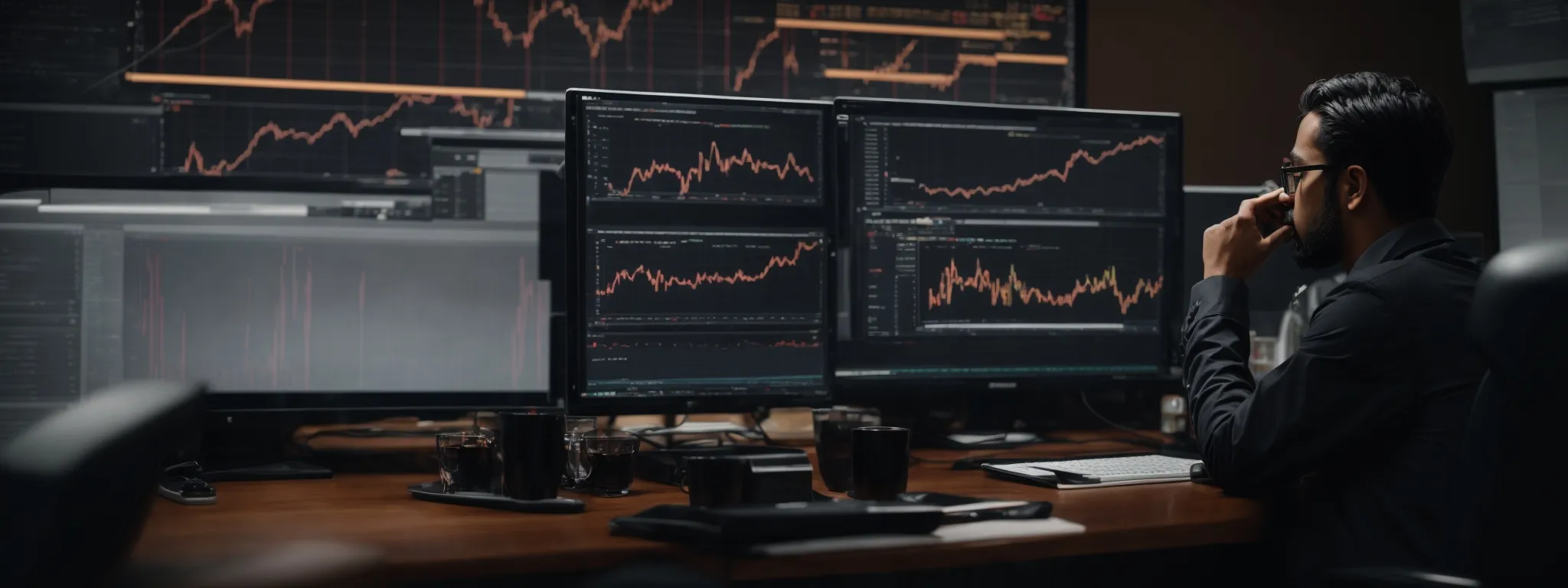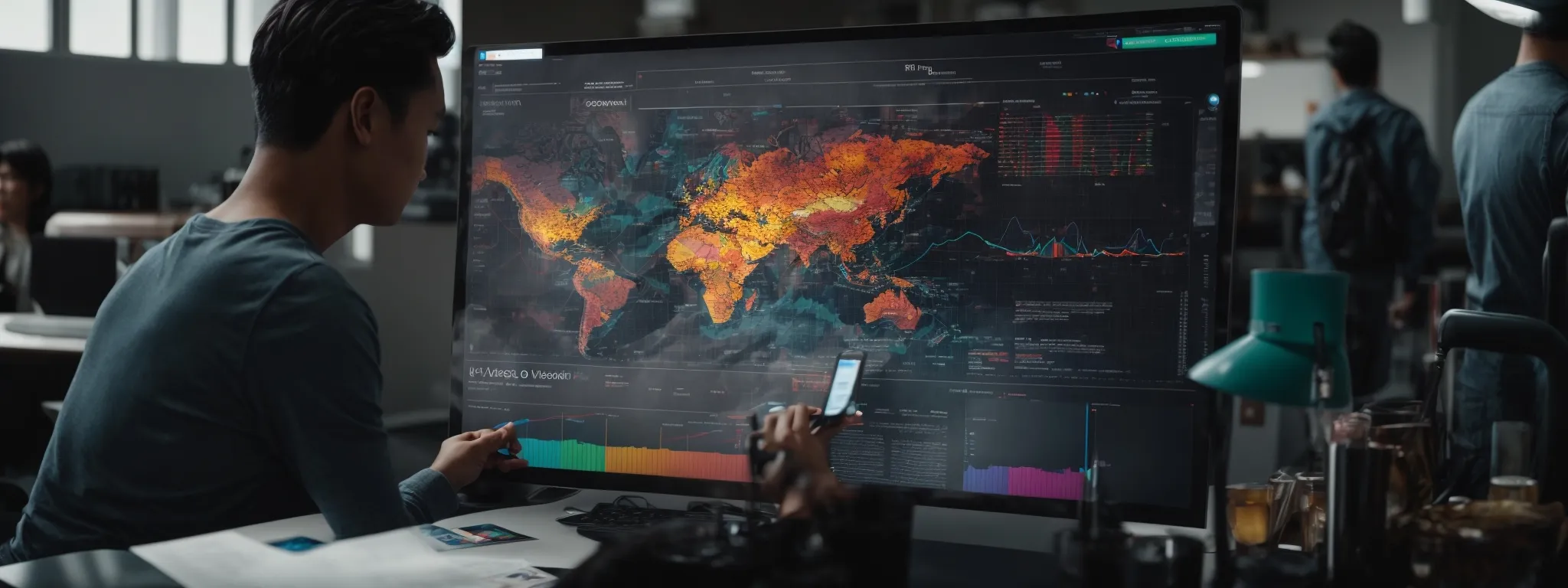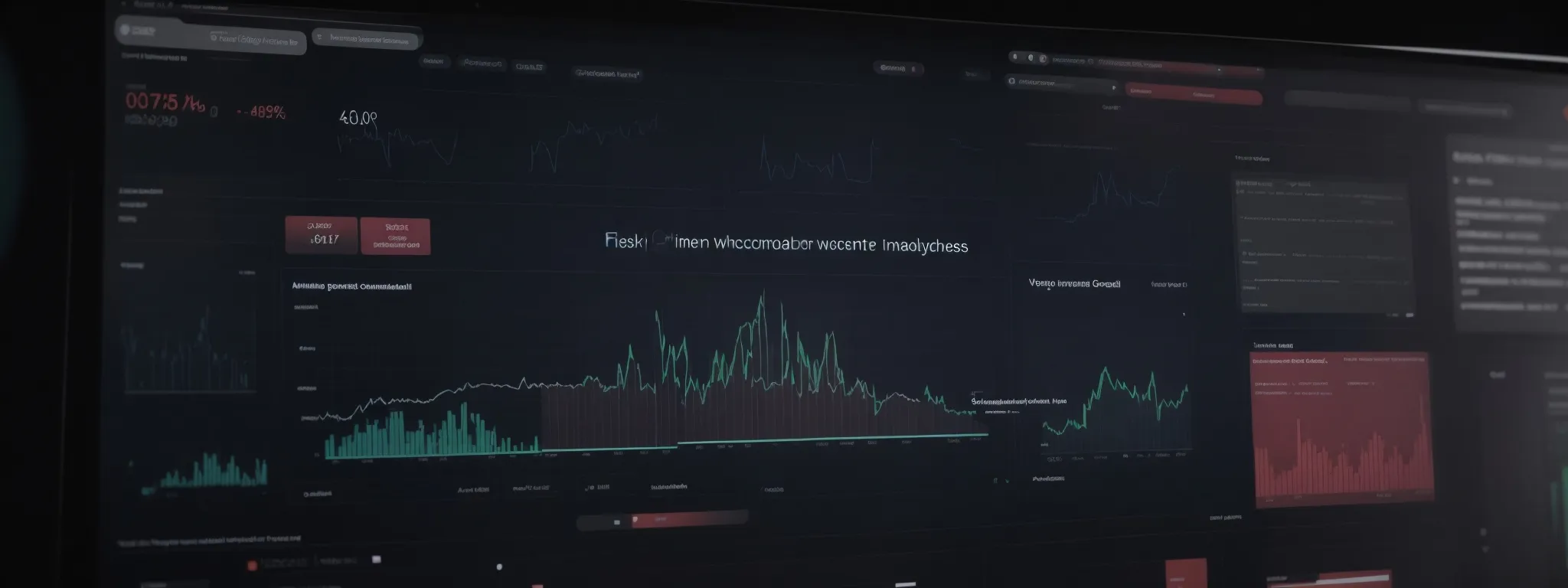Best SEO Content Tips
Mastering SEO: Essential Content Strategies to Boost Your Rankings Search Engine Optimization, the beacon guiding digital content through the tumultuous seas of search engine rankings, remains a […]
Mastering SEO: Essential Content Strategies to Boost Your Rankings
Search Engine Optimization, the beacon guiding digital content through the tumultuous seas of search engine rankings, remains a cornerstone of successful digital marketing strategies.
With the right content strategy, experts can sculpt a company’s web presence to attract a target audience, convert visitors into customers, and elevate a brand’s industry standing.
This intricate dance, blending technical SEO prowess with the craft of a seasoned SEO copywriter, demands a thorough understanding of the rules set forth by search engines and the ever-evolving SEO trends.
LinkGraph’s comprehensive SEO services help businesses navigate this complex landscape, ensuring their product pages and blog posts resonate with both search algorithms and human readers.
In this article, we divulge the intricacies of masterful SEO content creation that can catapult your site to the top of search engine results.
Key Takeaways
- Effective SEO Hinges on Creating Quality Content That Aligns With User Search Intent and Employs Smart Keyword Strategy
- Strategic Content Structuring With Headings, Subheadings, and Lists Enhances Readability and Search Engine Indexing
- Evergreen Content Offers Sustained SEO Benefits, Attracting Consistent Traffic and Backlinks Over Time
- Integrating Multimedia Elements With SEO Optimization Enhances User Engagement and Contributes to Better Search Rankings
- Regular Updates to Existing Content and a Solid Internal Linking Strategy Are Key to Maintaining Relevance and Authority in Search Engine Results
Understanding the Role of Content in SEO

In the dynamic landscape of digital marketing, an understanding of the intricate relationship between compelling content and search engine rankings is paramount.
Within this framework, the marriage of substance and SEO not only elevates a brand’s visibility but serves as the linchpin for SEO success.
By dissecting this relationship, content creators can unlock the potential of their web assets, ensuring that each product page, blog post, or newsletter is fine-tuned to resonate with the target audience and search engines alike.
This exploration illuminates how strategic content, far from being a mere formality, is a driving force in reinforcing a brand’s digital presence and authority.
Exploring the Relationship Between Content and Search Rankings
As brands vie for top positions in search engine results, the potency of SEO content has never been more apparent. Content that aligns with search intent not only garners favor from search engines but also facilitates a connection with the audience that is both meaningful and sustained.
LinkGraph’s Bespoke SEO Services exemplify this synergy by optimizing content that reflects the latest SEO trends, ensuring that every keyword phrase, page title, and subheading contributes to a robust SEO strategy and higher search engine ranking.
How Quality Content Contributes to SEO Success
In the realm of search engine optimization, quality content serves as the catalyst for enhancing user engagement and ensuring relevance to the searcher’s quest for information. The melding of valuable, informative text with SEO best practices such as strategic keyword incorporation and user-focused copy propels LinkGraph’s clients towards achieving impressive SEO results.
At the core, content possessing clarity, cogency, and value stands at the forefront of a successful SEO campaign:
- Contributing to reduced bounce rates by engaging users promptly,
- Increasing time spent on a web page through informative and well-structured articles,
- Boosting the click-through rate (CTR) as the compelling page titles and meta descriptions entice potential customers.
LinkGraph harnesses the power of its Search Atlas SEO Tool to methodically enhance each aspect of a webpage’s content, ensuring that its clients’ digital narratives resonate deeply with both the algorithmic parameters of search engines and the distinct needs of the target audience.
Conducting Comprehensive Keyword Research

In mastering the intricacies of SEO, identifying both primary and secondary keywords constitutes the foundation of a content strategy that targets, with precision, the very essence of search queries.
Armed with the appropriate keyword tool, professionals begin the meticulous process of keyword research, delineating a tapestry of search terms that resonate with their niche and audience.
This procedural foray into the heart of SEO serves to sculpt the textual landscape of a web page, infusing it with the potential to ascend towards the pinnacle of search engine results.
Identifying Primary and Secondary Keywords
Delving into the digital sphere with LinkGraph’s SEO Expertise means embracing a rigorous keyword strategy that illuminates the pathway to audience engagement and search engine approval. The identification of the right primary keyword acts as the cornerstone of a content plan, beckoning the attention of search engines while resonating with the user’s search intent.
Secondary keywords support the primary term, building thematic relevance across web pages and broadening the scope of search visibility. These supplementary keywords ensure a diverse yet cohesive content strategy that addresses a variety of related search queries:
- Strengthen connections between conceptual ideas on a topic,
- Enable expansion into new, thematically linked audience interests,
- Optimize web page SEO for a broader array of search engine results.
Tools to Find the Right Keywords for Your Niche
Navigating the pursuit of pertinent keywords demands the utilization of sophisticated tools capable of deciphering the complexity of user queries and search volume trends. LinkGraph’s Cutting-Edge Keyword Research Tools offer an empirical approach to sourcing a pantheon of keyword ideas, meticulously tailored to fit the unique contours of each company’s target market and product range.
Through leveraging these advanced tools, SEO professionals craft a keyword strategy that transcends mere guesswork, instead anchoring their campaign in data-driven selections that engage customers with precision and relevance. This invaluable methodology, when integrated with LinkGraph’s Comprehensive SEO Service, empowers content creators to construct a foundation upon which a website’s search engine ranking can rise and flourish in the search results panorama.
Crafting SEO-Friendly Content Structures

To achieve mastery in SEO entails crafting content that not only educates and engages but also conforms seamlessly to the algorithmic preferences of search engines.
Integral to this endeavor is the structured approach to page composition; where headings, subheadings, bullet points, and lists play a pivotal role.
These elements perform dual functions, introducing order and clarity to content, thus enhancing readability for users while simultaneously catering to the SEO framework that governs search engine rankings.
The intelligent use of these formatting tools is paramount in transforming a static block of text into an interactive content page, one that beckons a closer look from both users and search engines alike.
The Importance of Headings and Subheadings for SEO
The judicious implementation of headings and subheadings serves a critical function in the architecture of SEO-friendly content. These organizational markers not only guide the reader through the narrative flow but also signal the hierarchy and relevance of the content to search engine algorithms, aiding in more accurate indexing and facilitating improved search engine rankings.
LinkGraph acknowledges the pivotal role these elements play, utilizing them to craft content that both captivates the user and captures the attentions of search engines. Headings and subheadings, when populated with carefully selected keywords, become signposts that lead to enhanced digital visibility and underscore the importance of strategic content structuring in SEO.
Using Bullet Points and Lists to Enhance Readability
Employing bullet points and lists can dramatically bolster the readability of digital content. By breaking down information into digestible fragments, writers facilitate a smoother consumption path for readers, enhancing their ability to quickly assimilate key points without being overwhelmed by dense text.
LinkGraph harnesses this technique to amplify user engagement, guiding the viewer’s eye through the critical elements of a web page. This strategy not only aids skimming behaviors common among digital audiences but also serves to reinforce the content’s core messages and expertise within the industry.
Enhancing Content With Strategic Keyword Placement

The art of search engine optimization hinges significantly on the adroit placement and integration of keywords within web content.
Effectiveness in this area can precipitate profound enhancements in search rankings, making it a foundational aspect of any SEO strategy.
LinkGraph’s cognizance of incorporating pertinent keywords into titles, meta descriptions, and tags is not simply a technique but an orchestration that marries SEO with eloquent prose.
Achieving equilibrium between keyword density and the fluidity of natural language is a tightrope walk essential for any SEO copywriter’s repertoire.
This subsection will explore the finesse required to optimize content for both the discerning eyes of search algorithms and the nuanced reading preferences of a target audience.
Incorporating Keywords in Titles, Meta Descriptions, and Tags
LinkGraph’s strategic acumen understands that the potent use of keywords in titles, meta descriptions, and tags serves as a beacon to draw the focus of both search engines and users. These elements act as concise but powerful introductions to a web page’s content, influencing both its click-worthiness and its relevance in search engine results.
Effectively capturing the essence of the web page’s content through keyword-rich titles and meta descriptions, which are creatively crafted, positions LinkGraph Clients’ Content as frontrunners in the race for top search engine rankings. Such precision ensures that every web page is an entry point for potential customer engagement, leading to increased visibility and conversion opportunities.
Balancing Keyword Density With Natural Prose
Achieving a delicate balance between keyword density and the natural flow of prose embodies the subtleties inherent in expert SEO content writing. LinkGraph’s seasoned copywriters excel in weaving target keywords seamlessly into the fabric of the content, ensuring that the textual narrative remains engaging for the reader while being finely tuned for search engine algorithms.
The artistry of LinkGraph’s work lies in creating SEO content that avoids the pitfalls of keyword stuffing, which can detract from user experience and incur search engine penalties. Skillfully composed prose maintains the content’s readability and coherence, resulting in enriched web pages that fulfill the dual mandate of satisfying user intent and propelling search engine rankings.
Leveraging the Power of Evergreen Content

In an arena where digital landscapes perpetually evolve, evergreen content stands as a testament to timelessness, continually driving traffic and maintaining its relevance.
Defining and harnessing the power of evergreen content constitutes a strategic advantage in bolstering search engine optimization efforts.
With a focus on sustainability, such content transcends the ephemeral trends, offering SEO benefits that compound over time.
The forthcoming discussions aim to provide invaluable insights into the nature of evergreen content and share practical tips for crafting material that remains a perennial draw for search engines and visitors alike.
Defining Evergreen Content and Its SEO Benefits
Within the echelons of search engine optimization strategies, evergreen content is a powerful anchor, capable of attracting consistent traffic and sustaining interest over time. This genre of content remains perpetually relevant, transcending temporal trends and offering enduring value to readers.
The SEO benefits of evergreen content are multifaceted: it not only accrues more backlinks as an authoritative reference point but also establishes a website’s reputation for depth and reliability, thereby bolstering its search engine ranking. Through refining focus on topics with long-lasting appeal, companies can maintain a persistent digital footprint:
| Content Type | Evergreen Potential | Impact on SEO |
|---|---|---|
| How-to Guides | High | Attracts backlinks, lowers bounce rates |
| Industry Insights | Moderate to High | Encourages niche authority, enhances user engagement |
| Product Reviews | Moderate | Increases search relevance, improves CTR |
| FAQ Sections | High | Drives organic traffic, potentially features in answer boxes |
Tips for Creating Content With Lasting Relevance
To carve content that stands resilient against the tests of time, the shrewd content strategist focuses on crafting pieces that address universal questions, fundamental principles, or deep-seated needs within the target demographic. These subjects, often immune to the ebbs and flows of transient industry chatter, continue to spark interest and drive traffic across multiple calendar cycles.
LinkGraph’s Adept SEO Services integrate this approach by selecting topics with inherent longevity and threading them with timeless advice, authoritative knowledge, and actionable strategies that transcend momentary fads. This attention to crafting evergreen content ensures that a company’s digital resources remain a go-to repository of industry expertise and user guidance, serving as a beacon in the vast ocean of fleeting digital narratives.
Utilizing Multimedia to Boost Engagement and SEO

The integration of multimedia elements into website content is not merely about aesthetics—rather, it forms a critical component of a modern SEO strategy, enhancing user engagement and complementing the textual narrative.
Embracing diverse forms of media such as images, videos, and infographics serves to capture the fragmented attention of visitors, conveying complex information succinctly and memorably.
By marrying these visual elements with SEO-conscious optimization, LinkGraph ensures that multimedia not only enriches user experience but also fortifies the content’s visibility and performance in search engine results, establishing a seamless synergy that caters to both the human eye and the digital algorithms that determine a website’s prominence.
Incorporating Images, Videos, and Infographics Effectively
The art of blending various media forms, such as images, videos, and infographics into LinkGraph’s SEO Content, is a method not just aimed at visual appeal but at reinforcing the message and engagement of the content. Carefully selected visuals work in concert with the written word, elevating the content’s ability to inform and engage the audience while aiding in SEO efforts by keeping visitors on the page longer and encouraging social sharing.
Video content, particularly, serves as a potent vehicle for delivering complex information in an easily digestible format, keeping pace with the evolving preferences of today’s digital consumers. Whether demonstrating a product’s use or elucidating abstruse concepts, videos complement textual content, augmenting user engagement and aiding in the conveyance of a narrative that is more likely to be shared and linked, thus amplifying SEO benefits:
| Media Type | Engagement Boost | SEO Advantage |
|---|---|---|
| Images | Visual Stimulation | Increased Time on Page |
| Videos | Higher Information Retention | Improved Shareability |
| Infographics | Concise Data Presentation | Greater Chance of Backlinks |
Optimizing Multimedia Elements for Search Engines
LinkGraph’s concerted approach to search engine optimization includes a meticulous refinement of multimedia elements to ensure they contribute effectively to a website’s SEO footprint. Optimizing images, videos, and infographics involves precise alt text descriptions, relevant file names, and strategic tagging, which makes these elements discoverable and indexable by search engines, ultimately bolstering the web page’s relevance and authority.
Attention to the technical details of multimedia, such as reducing file sizes for faster loading times, directly influences a website’s user experience and, by extension, its search engine rankings. By enhancing the compatibility of these media forms with SEO principles, LinkGraph crafts digital experiences that captivate and retain user attention while satisfying the algorithmic criteria that propel visibility in search engine results.
Improving Page Load Speed for SEO Advantage

In the digital battlefield where mere seconds can dictate user engagement and retention, optimizing page load speed emerges as a paramount factor in search engine optimization.
Businesses eager to climb the SEO rankings recognize that a web page’s velocity impacts not just user experience but also its visibility in search engine results.
The utilization of advanced tools for assessing and enhancing webpage load times is crucial in establishing a competitive edge in SEO.
A comprehensive understanding of how load times can make or break a website’s performance is essential for those looking to refine their digital reach and resonance.
Tools for Assessing and Optimizing Page Speed
LinkGraph’s SEO services encompass the critical aspect of website performance, where tools for evaluating page load speeds are indispensable. Recognizing the correlation between swift page loads, user satisfaction, and higher SEO rankings, LinkGraph utilizes advanced diagnostic software to meticulously analyze website performance issues and identify optimization opportunities.
Armed with insights from these cutting-edge analyses, the company implements strategic enhancements to improve load times, thereby ensuring that each web page not only captivates the audience with rapid access to content but also aligns with search engines’ preference for speed, bolstering the website’s position in Google search results.
The Impact of Load Times on SEO and User Experience
Page load speed stands as a profound determinant of both SEO and user experience. A swift-loading web page is rewarded by search engines with higher rankings, reflecting the value placed on user efficiency and satisfaction.
From the perspective of audience engagement, pages that load quickly reduce bounce rates and encourage visitors to delve into more content, creating a positive feedback loop that enhances the duration and depth of user interactions with the website.
Keeping Content Fresh With Regular Updates

In the vibrant ecosystem of digital marketing, refreshing existing content is an underpinning strategy for SEO efficacy.
Search engines like Google frequently update their algorithms, heightening the need for businesses to revitalize older web pages to remain relevant and authoritative.
Regular content updates signal to search engines that the information offered is current, enhancing the site’s credibility and potentially boosting its rankings.
This section introduces pivotal techniques for reviewing and revitalizing web content, spotlighting both the significance of updating antiquated material and the systematic approach to conducting a content audit aimed at SEO enhancement.
The Importance of Updating Old Content
Refreshing antiquated content is not merely a matter of maintaining accuracy; it is a strategic maneuver in the never-ending game of SEO. Pivotal for maintaining relevance, updating old content ensures that a website remains a trusted source of information for both search engines and users, reinforcing its positions in search results.
By periodically revisiting and refining previous blog posts, articles, and landing pages, businesses signal to search engines that they are committed to providing the most current and beneficial information. This practice not only serves the informational needs of visitors but also fosters a perception of authority and expertise within the given industry:
| Content Type | Action | SEO Impact |
|---|---|---|
| Old Blog Posts | Update with Recent Data | Improves Content Freshness |
| Product Pages | Revise Product Descriptions | Increases Relevance for Search Queries |
| Industry Guides | Incorporate Latest Trends | Strengthens Subject Matter Authority |
| Case Studies | Add New Outcomes and Insights | Enhances User Engagement |
How to Perform a Content Audit for SEO Improvement
A content audit for SEO improvement begins with a systematic review of all the digital assets within a website’s domain. This meticulous process involves evaluating each piece of content against current SEO standards to ascertain its performance and relevance:
| SEO Factor | Action | Expected Outcome |
|---|---|---|
| Keyword Optimization | Analyze and adjust keyword usage | Alignment with current search trends |
| Content Quality | Enhance text for value and engagement | Improved user experience and dwell time |
| Link Structure | Inspect and optimize internal/external links | Improved navigation and link equity distribution |
| Meta Data | Refine titles and descriptions for clarity | Increased CTR from search engine results pages |
Following the initial assessment, LinkGraph devises a strategic plan to renovate content, with the aim to amplify visibility and drive engagement. This overhaul may include updating outdated information, enriching articles with multimedia, and consolidating underperforming pages to amplify authority and enhance SEO stature:
Building Internal Linking Strategies

In the intricate ballet of search engine optimization, internal linking operates as a powerful choreography that orchestrates user journey and fortifies the SEO framework of a website.
By interweaving a web of strategic connections within the site’s own pages, businesses can enhance the narrative experience for users while signaling to search engines the breadth and depth of their content’s relevance.
Subsequent discussions will delve into how internal links can be leveraged to strengthen a website’s SEO fabric and elevate the user experience, as well as share best practices for implementing an efficient internal linking structure that complements an overarching content strategy.
How Internal Links Enhance SEO and User Experience
Internal links serve as conduits that guide visitors through a company’s digital landscape, seamlessly connecting related content and promoting a more holistic user journey. By facilitating ease of navigation, these links enhance the overall user experience, leading to increased engagement and time spent on site—key signals of quality to search engines.
From an SEO perspective, a well-implemented internal linking structure distributes page authority and link equity throughout the site, reinforcing the thematic interconnections of content. This silent but effective communication with search engine crawlers emphasizes the relevance and breadth of a site’s informational resources, potentially improving the site’s overall search engine ranking.
Best Practices for Efficient Internal Linking
LinkGraph Champions Internal Linking as a critical strategy for enhancing a website’s navigability and reinforcing its topic clusters. An effective internal linking strategy ensures that important pages receive more link equity, signaling their significance to search engines and enabling smoother user navigation.
Strategic placement of internal links, according to LinkGraph, should follow a logical and hierarchical approach that mirrors the website’s structure. This method helps search engines understand the relationships between pages, bolstering the site’s overall SEO performance:
- Anchor text should be relevant and descriptive, providing clear cues about the content of the linked page.
- Links should be judiciously distributed throughout the content, preventing any single page from becoming an isolated silo.
- The internal linking process must remain dynamic, with regular reviews to ensure all links stay current and beneficial to the overall SEO strategy.
Measuring SEO Performance With Analytics Tools

In the pursuit of mastering SEO, the real measure of a content strategy’s success lies in the ability to evaluate and hone its effectiveness through analytical data.
Introducing robust Key Performance Indicators (KPIs) is essential for making data-driven decisions that bolster content SEO.
By harnessing the capabilities of tools like Google Analytics, content creators and digital marketers can track the performance of their content with precision, adjusting their tactics to amplify their impact on search rankings and achieve measurable growth.
Introducing Key Performance Indicators for Content SEO
An insightful suite of Key Performance Indicators (KPIs) is transformative for content strategists and SEO experts, bridging the gap between qualitative content creation and quantifiable SEO success. LinkGraph meticulously calibrates these KPIs to enable a transparent view of SEO activities, anchoring them in empirical evidence that guides and refines ongoing strategies.
Metrics such as organic traffic growth, keyword rankings, and conversion rates are pivotal KPIs that LinkGraph harnesses to maximize the effectiveness of content SEO. These indicators yield substantive insights into the impact of specific content pieces and overarching campaigns, carving a path for measured optimization initiatives that heighten search engine visibility and user engagement.
Utilizing Google Analytics to Track Content Effectiveness
LinkGraph Employs Google Analytics with finesse, transforming raw data into actionable insights that inform and adjust their SEO content strategies. This powerful tool provides a window into user behavior, offering clarity on the effectiveness of content in engaging the audience and fulfilling search intent.
By monitoring parameters such as pageviews, session duration, and bounce rates, LinkGraph deciphers how their SEO content resonates with visitors, leveraging these metrics to optimize web pages for peak performance in Google search results. The data-driven nuances revealed through Google Analytics empower not just surface adjustments, but the strategic fine-tuning of content to better serve the target audience and search engine algorithms.
Conclusion
Mastering SEO through essential content strategies is crucial for enhancing website rankings and digital market success.
Quality content that aligns with user search intent, incorporates strategic keyword use, and adopts a structured format not only improves engagement but also strengthens a brand’s visibility and authority in search engine results.
Regularly updating content, optimizing multimedia elements, and refining page loading speeds are additional tactics that vastly influence a site’s SEO performance and user experience.
Moreover, a well-planned internal linking strategy can guide users effectively and help distribute link equity across a website.
Employing analytics tools like Google Analytics enables the measurement and refinement of these strategies, providing insights into user behavior and content effectiveness.
Collectively, these components underscore the indispensable role of a comprehensive and data-driven SEO content strategy in achieving top search rankings and sustained online success.















































































